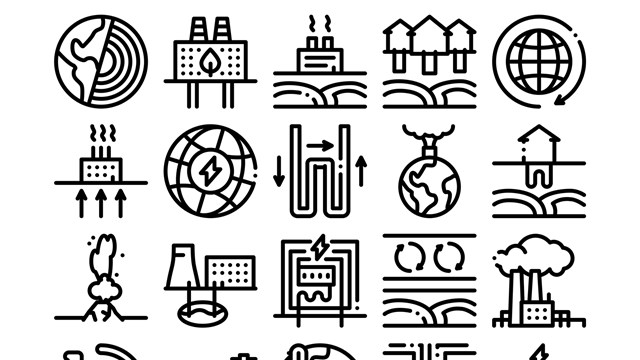
For the past couple of decades, interest in the environment and "greening" of residential buildings has been creeping into our daily lexicon; nowadays, the theories have become practice, and renewable or "green" power is now more accessible than ever before. With planning and guidance, just about any building can inject a little environmentally friendly, money-saving green into its daily operations.
The second group is made up of managers and directors whose building energy costs are becoming so unpredictable, their energy budget falls apart by mid-year. These administrators need to present a price stability strategy to their board and shareholders for, at minimum, the company's annual electricity cost. Finally, there's the building that wants to attract a new breed of co-op or condo buyers - those motivated by environmental issues like clean air, and less pollution. These individuals and boards want to build a green image and create a green marketing campaign for their property.
Renewable Energy
Regardless of the reason for one's interest in green power, some important background information should come first. Green power is electricity that is generated by renewable energy sources such as wind, solar photovoltaics, biomass (using plant compost or waste as fuel), low-impact hydro, geothermal, and ocean power. "Renewable" means sustainable, or regenerating - as opposed to the fossil fuels that are being depleted and are not renewable. Green power from renewable generators is available to New Yorkers and to over 50 percent of retail customers nationwide. As more consumers buy green power, more renewable generation is developed.
A question that commonly surfaces in discussions of green power is, can we get enough green power to support this market? If we look at wind generation only, the American Wind Energy Association (AWEA) claims that with the existing infrastructure and U.S. wind resources, 20 percent of our electricity could be generated by wind. And, if intense wind areas like North Dakota get transmission improvements, wind could generate more than 33 percent of our country's electricity - and that's just wind alone.
Other benefits of green power are numerous and more than a little significant:
Green power is also both more reliable and more stable than fossil fuels. As demand for green power increases, the nation will become less and less dependent on foreign imports and domestic gas and oil. Green power is also less subject to the volatility of fossil fuel prices. On the electric bill for 100 percent green power, there should be no fuel cost adjustments - and in the event of a city-wide power outage, buildings run with green power photovoltaic cells would still have enough power stored in the cells to operate normally until regular power was restored.
Getting Green
There is a wide array of green products available on the market today, and most can be tailored to fit any budget, space constraint, or level of "greening" in a given building.
First and foremost among the new green resources is probably electricity. According to New York's energy deregulation laws, if your current supplier does not offer green power, you can switch suppliers in order to buy a percentage of your electricity (25 percent, 50 percent, 100 percent) as green power. Normally you pay a premium of 1 to 1.5 cents per kilowatt hour for the green electricity. If you used 400 kilowatt hours one month and bought the 1 cent renewable blend of electricity, you would pay a $4 premium on your electric bill for that month. The supplier verifies what renewables are blended in each of the green power products, such as new wind, biomass, and low-impact hydro. Certification of green power is also provided. Sterling Planet, Con Edison Solutions and Constellation New Energy are some of the green power vendors in New York. Businesses and residential buildings have added renewable generation to their buildings and properties to increase reliability, trim their bottom line, and contribute to a healthier environment. Green-friendly environmental policies have been evolving, and in many states, residents are encouraged to go green with financial incentives and tax breaks. An excellent summary of this information is the Database of State Incentives for Renewable Energy found at www.dsireusa.org.
Questions to Ask
What should you consider in selecting green power products? How can you know the product or service you're using is approved for its purpose? The following are a few questions green power consumers should ask-along with some answers:
What certification does the product carry? Most green power is certified to ensure that you get what you pay for. Look for the Green-e certification or the Environmental Resources Trust ERT green diamond. What type of renewables are in the mix of sources our building is using, and how much of each? Green power vendors are usually very open about what percent of their power is wind, biomass, solar, etc. You may see "bioenergy" instead of biomass or "low-impact hydro," or "small hydro."
How much of our mix is made up of "new" renewables? Choose "new" renewables because renewable energy generation initiated after 1996 carries the most environmental benefit.
Where is our renewable power generated? Most green power purchasers want to support their home state's industry. You may have to ask about origin, if it is not part of the sales literature. New York wind, biomass, and low-impact hydro are for sale in both the electricity form and the attribute form (certificates).
Can energy efficiency offset the green power cost? Yes, if you are able to reduce the total power your company or home uses, you can achieve no net gain in energy costs. You will have the funds for green power purchasing and be operating as an efficient company or household. Check that attic insulation and those light bulbs!
How is this green power market supported? There are federal, state, local and utility incentives that are encouraging the renewable energy sector. The states have taken the lead in setting Renewable Portfolio Standards. In some states, renewable energy is a mandated percentage of the state government's total energy purchases. In other states renewables must make up a percentage of the market electricity each of the state's utilities sell. To comply, utilities must buy more green power or build renewable generation themselves.
The federal government has extended the large wind production tax credit nationally for builders and operators of wind farms. The U.S. Green Building Council LEED Program (Leadership in Energy & Environmental Design) awards green power purchase points in its green building rating system. As a result of this support, each month, more green power developers and electricity customers are responding. As we buy more green power, more renewable generation is built. We contribute to clean air and build the road to energy independence.






Comments
Leave a Comment